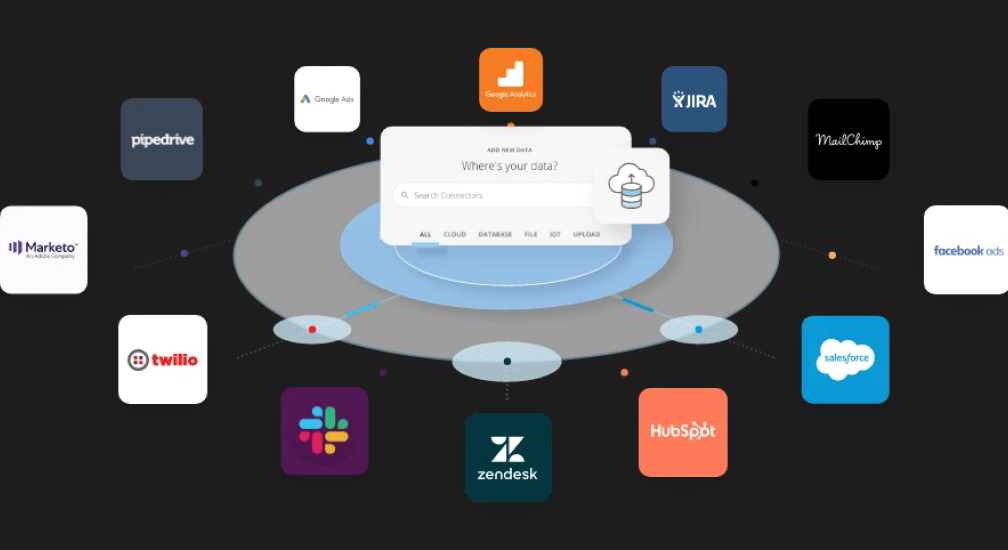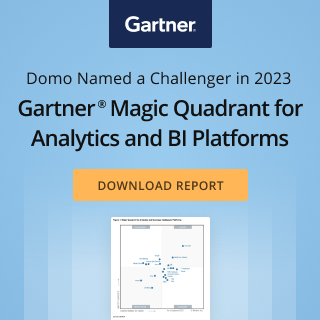How can a data warehouse boost my business reporting?
Nowadays, pretty much every business uses business software to manage their operations and provide insight into their business health. In fact, most businesses use a half dozen or more different tools to collect data about their operations.
Businesses need to access and utilize the information that these pieces of software collect, so that they can make data-driven decisions and build effective business strategies. However, that’s easier said than done.
Just one of these tools can produce more data than a business could comfortably store physically on-site. At the scale that most businesses operate at, any on-premise storage solution would quickly run out of space.
In addition, businesses need to store their data in a central location instead of having to search all their different tools and programs to find what they need. This is also very hard to do using a physical storage server.
Businesses that want to effectively use their data need a storage solution that’s cloud-based and centralized. This is where data warehouses come in.
Data warehouses take businesses’ data, centralize it, and store it off-premise on a server with essentially unlimited server space. This is one of the best solutions to businesses’ data storage problems.

What is a data warehouse?
A data warehouse is a piece of data storage infrastructure where a business can store all of their business data, regardless of the format or source. They can be implemented on-premise, but usually they’re cloud-based.
The cloud is a network of third-party apps and storage solutions that exist on remote servers and other off-premise machines. Instead of storing a given data source or piece of software on-premise and needing to find processing power and storage space for it, businesses can store it on the cloud and access it remotely through the Internet.
Through the power of the cloud, businesses can implement data warehouses that have much more storage space than they’d be able to build physically. They allow businesses to store their huge amounts of operational data in a way that maximizes flexibility and minimizes cost.
How does a data warehouse operate?
If you’re familiar with storing personal data on the cloud, data warehousing is the same idea, just a different process. You’re still storing your data on a third-party remote server, but there are some key differences in how to do it.
Unlike consumer cloud implementations, you usually can’t just upload data straight from a computer to a data warehouse through a simple desktop interface or mobile app.
Business data isn’t as standardized as picture or video formats. A consumer cloud warehouse can plan for the same two or three different types of video files, but operational data might be transmitted in dozens of different formats across tools.
That means that uploading data to a data warehouse is more of a process. Businesses have to integrate their tools with the data warehouse, meaning that they need to build code bridges between the tools that allow them to communicate with each other.
These code bridges convert the data from your business tools into the format that the data warehouse can store. Not only does this make data storage much less complicated, it also allows you to combine and compare data from different tools.
To be effective, a data warehouse needs to connect to every business tool and data source that you use, so that no data is left out. These integrations also need to be persistent so that data can be transferred and updated automatically.
After all your data has been collected into the data warehouse, it needs to be analyzed and visualized to be of any use. Many businesses use their business intelligence system as a data warehouse so that there’s no need to connect to another tool to do this.
Some businesses, especially larger ones, use standalone data warehousing solutions that don’t come with any analysis or visualization tools. While these solutions can often store more data than BI tools, businesses that use them then also have to worry about connecting their data warehouse to their data analysis tool.

Data warehouse infrastructure
Often, data warehousing is just a two-or three-step process. Data travels from its original source into the data warehouse, and from there it’s either analyzed right in the warehouse or it’s transferred to a data analysis system.
However, there are situations where this setup needs to be made more complex so that businesses can access and utilize their data more easily.
Businesses often introduce more layers of abstraction between the central, business-wide data warehouse and the end user. Sometimes, this is for increased data security, and other times, it’s to reduce the data demands on the central warehouse.
Data storage systems that introduce more layers between basic data storage and the end user are called federated systems. Data federation can help businesses utilize their data in more effective ways.
There are a few different solutions for federating a data storage system. Sometimes, businesses introduce smaller data warehouses called ‘data marts,’ which only cover a specific topic. This way, users only need to access their relevant data mart instead of the data warehouse as a whole.
Other systems allow for federated queries, which are data requests that connect a data source and an analysis tool directly. This bypasses the data warehouse entirely and doesn’t store any information there. This solution is useful for handling sensitive data.
Many businesses don’t need to build out complicated data warehousing infrastructure at all. If your business is unhappy with basic data warehousing, though, there are options to change and improve the process to better fit your operations.
Data warehouses and business reporting
Data is only useful if a business can actually put it to work. Many times, businesses have dozens of different data sources that they want to collect insight from, but they don’t have the data infrastructure necessary to make sense of it all.
Data warehouses can help to solve this problem and allow businesses to actually turn their data into insight. With better organization, improved business reporting is possible.
Combine and compare data sources
Once data has been transferred into a data warehouse, it should be source-agnostic. That means that, regardless of where it came from, it can be combined with and analyzed alongside any other data set.
This means businesses can analyze data from one tool in the context of data from a different tool. For example, they could combine data from their CRM and accounting tools, or compare the data from their time tracking and payroll tools.
From there, businesses can see how the data from their different data sources correlates. By combining data from different sources into synergistic data streams, they can find insight that would have been impossible to see with siloed tools.

Analyze trends in real time
One of the most valuable use cases for data is in tracking trends and KPIs. With better access to their data, businesses can track their operations and monitor their health much more closely than they could in the past.
Data warehouses make these metrics easier to find and allow for automatic, real-time updates. Not only is it easier for decision-makers to view their KPIs, they know the data they’re getting is up-to-date.
Minimize the data pipeline
Data warehouses minimize the operational hurdles that prevent data from getting to end users. They help data handlers turn their data from raw figures into actionable insight with less work.
Data integrations and automatic data updates make data handlers’ lives much easier. Data can get where it needs to go with a minimum of human input and with a minimum of human error.
Upgrade your data governance
Without a data infrastructure strategy, it’s very hard for any business to control access to their data. Everything has to be done ad-hoc, and often, it’s easier to share credentials to business tools than it is to actually share the data in those tools.
With a data warehouse, businesses can set up rules for who can see what data. This way, everyone can access the data they need and only access the data that they need. No implications are missed because of siloed data, and no one’s sharing or accessing data they aren’t supposed to be.
Boost your business reporting with data warehouses
All these benefits, like the ability to combine data from different data sources and an improved data pipeline, help to ensure that end users are getting data that’s actionable and can be used for insight.
Good end-user reporting relies on every other stage of the process. When a user views a dashboard, every other BI process has to have been executed correctly for that dashboard to contain any sort of valuable insight.
With a data warehouse, every backend BI process is made easier. With smoother, simpler backend BI operations, it’s much easier for data experts and dashboard builders to provide effective data implications.
